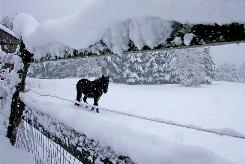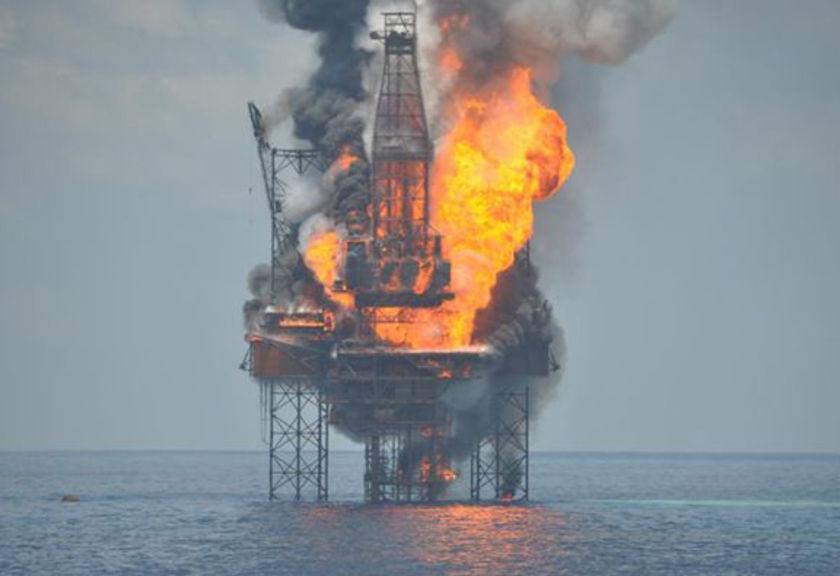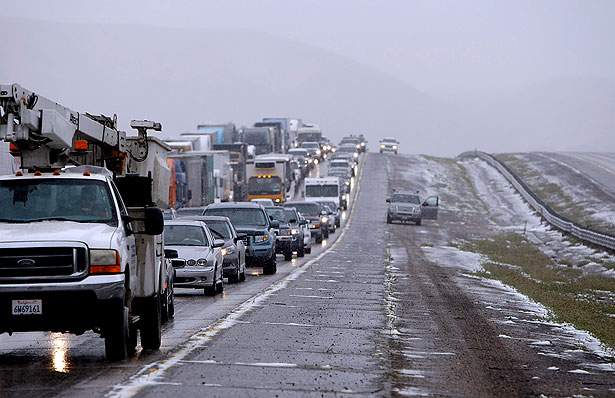
© Toby Talbot, APA horse is seen through a snow-covered fence in a pasture in Calais, Vt., Wednesday, April 28. A spring snowstorm dumped 12 to 18 inches of snow in some areas of Vermont, according to the National Weather Service.
Montpelier, Vermont - A late-season snowstorm dumped up to 2 feet of heavy, wet snow on northern New York, Vermont and New Hampshire by Wednesday morning, cutting off power to thousands, closing some schools and leaving roads slippery.
"It definitely caught people off guard, considering we had 80 degrees back in March. It's a problem because some people swapped their (snow) tires out already," said Vermont highway dispatcher Greg Fox.
About 30,000 customers were without power in Vermont, New Hampshire and northern New York at 8:30 a.m. Wednesday. Utility officials said it could be Thursday before power is fully restored.
"We've been hammered all night," said New York State Police Trooper Eric LaValley of the Ray Brook barracks, in the Adirondack Mountains.
Large storms so late in the season are rare. On April 23, 1993, 22 inches of snow was reported in Malone, N.Y., and on April 27, 1874, 24 inches of snow was reported in Bellows Falls, Vt., said Mark Breen, the senior meteorologist at the Fairbanks Museum and Planetarium in St. Johnsbury.



